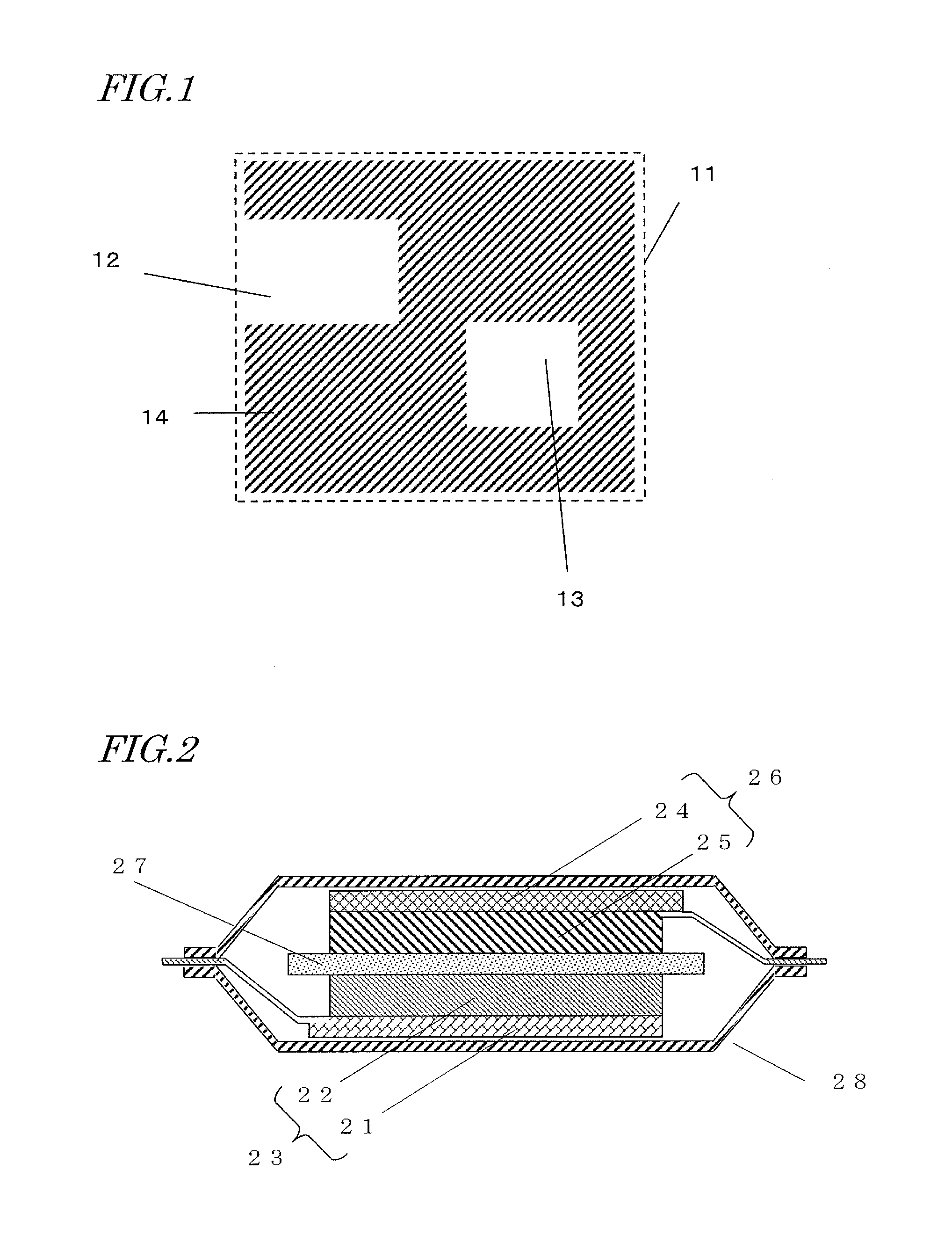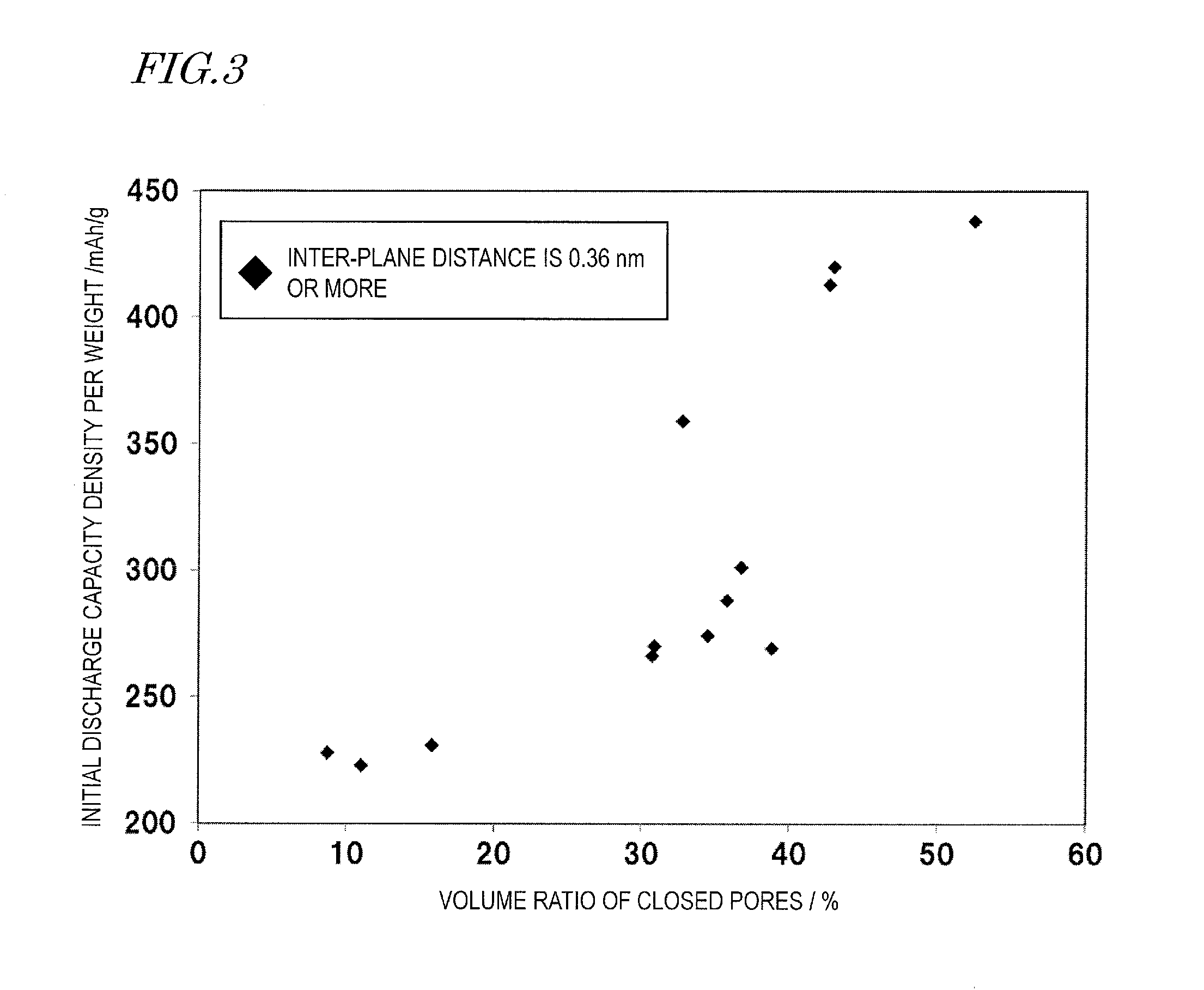Negative-electrode active material for sodium-ion secondary battery, method for manufacturing said negative-electrode active material, and sodium-ion secondary battery
a sodium-ion secondary battery and negative-electrode technology, applied in the direction of electrochemical generators, cell components, chemistry apparatus and processes, etc., can solve the problems of difficult to realize adequate performance of sodium-ion secondary batteries, high cost, scarce yield, etc., and achieve high capacity and large capacity per unit weight
- Summary
- Abstract
- Description
- Claims
- Application Information
AI Technical Summary
Benefits of technology
Problems solved by technology
Method used
Image
Examples
embodiment 1
[0033]Hereinafter, with reference to the drawings, an embodiment of a negative-electrode active material for a sodium-ion secondary battery according to the present invention will be described.
[0034]The negative-electrode active material for a sodium-ion secondary battery according to the present embodiment contains a porous carbon material. FIG. 1 shows a schematic structure of the porous carbon material 10. The porous carbon material 10 has a plurality of open pores 12 that extend through to a surface 11 of the porous carbon material 10, a plurality of closed pores 13 that do not extend through to the surface 11, and a solid portion 14. FIG. 1 schematically shows one open pore 12 and one closed pore 13.
[0035]The porous carbon material 10 may be of various shapes so long as it possess the aforementioned structure having the open pores 12, the closed pores 13, and the solid portion 14, and may be of various shapes that are generally usable in active materials for a sodium secondary ...
embodiment 2
[0060]An embodiment of a sodium-ion secondary battery according to the present invention will be described. FIG. 2 is a schematic cross-sectional view illustrating a construction for a sodium-ion secondary battery of the present embodiment. The sodium-ion secondary battery includes a positive electrode 23, a negative electrode 26, and a separator 27 and an electrolyte which are interposed between the positive electrode 23 and the negative electrode 26.
[0061]In the example shown in FIG. 2, the positive electrode 23 includes a positive-electrode current collector 21 and a positive-electrode mixture layer 22 formed on the positive-electrode current collector 21, the positive-electrode mixture layer 22 containing a positive-electrode active material. The negative electrode 26 includes a negative-electrode current collector 24 and a negative-electrode mixture layer 25 formed on the negative-electrode current collector 24, the negative-electrode mixture layer 25 containing a negative-elec...
example 1
Production of the Negative-Electrode Active Material
[0080]A porous carbon material to become the negative-electrode active material was produced through the three steps of a carbonization step, a classification step, and a heat treatment step as below.
[0081]First, the carbonization step is described. α-cellulose (quantitative filter paper manufactured by Whatman (No. 40)) was used as a carbon source, which was heated at a rate of 10° C. per minute up from room temperature in a circular furnace (Ar gas flow rate: 1 L / min) under an Ar atmosphere, until reaching 1000° C., and then maintained at 1000° C. for 1 hour. Thereafter, heating was stopped, and after natural cooling, a carbide was taken out of the tube furnace.
[0082]Next, the classification step is described. The carbide obtained through the above carbonization step was pulverized in an agate mortar, and classified by using a standard sieve of SUS with an opening of 40 μm, whereby carbon powder was obtained.
[0083]Lastly, the hea...
PUM
| Property | Measurement | Unit |
|---|---|---|
| distance | aaaaa | aaaaa |
| distance | aaaaa | aaaaa |
| temperature | aaaaa | aaaaa |
Abstract
Description
Claims
Application Information
 Login to View More
Login to View More - R&D Engineer
- R&D Manager
- IP Professional
- Industry Leading Data Capabilities
- Powerful AI technology
- Patent DNA Extraction
Browse by: Latest US Patents, China's latest patents, Technical Efficacy Thesaurus, Application Domain, Technology Topic, Popular Technical Reports.
© 2024 PatSnap. All rights reserved.Legal|Privacy policy|Modern Slavery Act Transparency Statement|Sitemap|About US| Contact US: help@patsnap.com










